American pioneers settled the western half of the United States between 1790 to 1880, and during that time clothing had to be practical rather than fashionable. While city dwellers were able to buy finished garments at specialty shops, folks living on the prairie had to stitch their own clothes, and the sewing machine wasn't widely available until the second half of the 19th century. To dress like a pioneer these days, there are options available from designer interpretations of gingham dresses to low-cost, costume-shop ensembles. Any pioneer outfit, whether for a man, woman or child, should include some notable staples.
Pioneer Woman or Girl Costume
Research the pioneer look by searching for images of frontier women from the 19th century, as well as reading books such as "Little House on the Prairie" by Laura Ingalls Wilder.
Decide how accurate you want your outfit to be. For example, a chemise is a short-sleeved cotton or linen undergarment that's hemmed between your knee and calf. Many people won't ever see this piece of clothing, but if you want an accurate costume, consider including it. Other elements can be hand sewn, which will certainly take more effort than buying the clothes online or in a store.
Sew or purchase the pieces of clothing for your costume, including a dress, petticoat, corset and bonnet. Sewing patterns can be found for many of these pieces, such as a one-piece dress with a loosely fitted bodice attached to a full skirt with ruffles. While ankle-length dresses were customary at the time, pioneer women wore them slightly shorter to keep the hem from getting dirty. Shoes or boots may need to be purchased (or a simple, dark-colored pair can work).
Pioneer girls dressed similar to their mothers, yet most clothing options were a little more comfortable. Girls between the ages of 12 and 14 would hem their dresses to about mid-calf. Older teens ( ages 14 to 18) wore dresses that extended to the lower calf.
Dress up in the clothing. You may want to add accessories such as a pinafore apron or shawl to complete the look.
Style your hair. In the pioneer era, many women wore their hair shoulder-length and parted in the middle. Since loose hair would get dirty, it was often worn in a bun or braided.
Pioneer Man or Boy Costume
Research the pioneer look for men. Several photos can be found online, and you can also read popular books of the era such as James Fenimore Cooper's "The Deerslayer."
Consider the style and authenticity of the outfit. While underclothing such as drawers won't be seen by anyone, purists may want to create a historically accurate outfit from head to toe. Much about about men's clothing hasn't changed since the pioneer era, which makes it easier to "cheat" and get a piece of clothing close enough for it to pass as a costume.
Make or buy the clothing for your outfit. Patterns can be found for the loose-fitting dress shorts, vests and coats. The shirt style was in transition during the pioneer era, most buttoned down to the middle of the chest, and they had a dropped shoulder and full sleeves.
Vests and coats, usually made of wool or tweed, can either be fitted or loose. Coats from the mid-19th century would be cut in a "frock" or "sack" style, which gave the wearer plenty of room to move. Accessories such as suspenders and boots will probably be easier to purchase than make.
Dress in the clothing. Keep in mind that long shirts were tucked into the pants and even used as drawers, when necessary. The pants were typically worn high on the waist. Suspenders attached with buttons were more common than belts. Working class men wore loose-fitting garments, while well-to-dos could opt for tighter pants and shirts. Hats, such as a newsboy cap, straw hat or even a top hat, are optional.
Up until age 8 or so, boys were dressed in gowns for ease. Once older, they dressed much like grown men.
Style your hair. Most men wore their hair shorter than their shirt collar and often brushed back or in a side part. Facial hair varied from clean shaven to goatees and even thick beards.
Related Articles
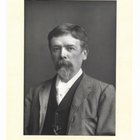
Men's Fashion in the 1890s
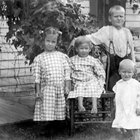
Children's Clothes in 1915
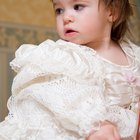
Children's Clothing of the 1800s
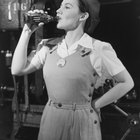
Women's Clothes in 1943

Fashion for Children in the 1960s
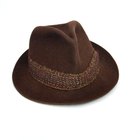
1950s Gangster Clothes
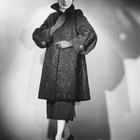
1958 Men's and Women's Dress Styles
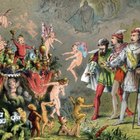
What Did Men Wear During the ...

What Do Women Pirates Wear?

Children's Clothes in 1910
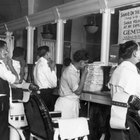
Men's Fashion of the 1930s

About Apache Indian Clothing

Farmer's Wife's Clothes in the 1800s

The History of Denim Jackets

Guys' Greaser Clothes of the '50s
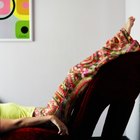
1970s Fashion Silhouettes

How Did Men Dress in the 1960s?

Easy, Comfortable Clothing Styles for ...
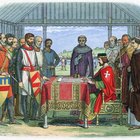
Kids' Clothing During the Medieval ...
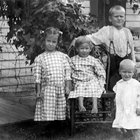
Children's Clothing From the 1920s
References
Writer Bio
Neil Gladstone's writing has appeared in The New York Times, USA Today and Popular Mechanics. He's also the co-founder of the DIY community CraftFoxes and The Craftys, awards for makers and crafters.